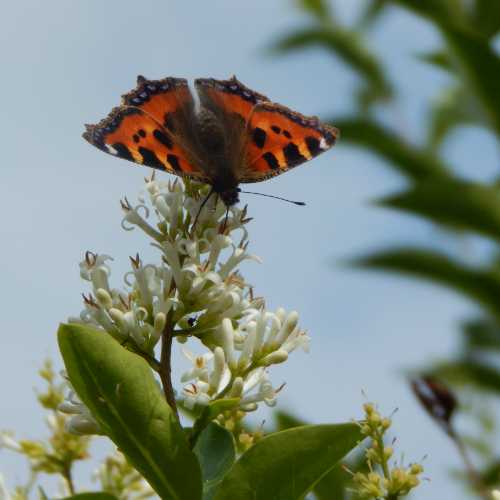Beneficial Insects
Did you know,
the number of beneficial insects and ‘benign’ or ‘harmless’ insects, far
out-number so-called pests?
Beneficial Insects: The Numbers Say It All…….
I saw an interesting statistic at the Natural History Museum in
London, which I then confirmed by email: only 1000 of the 1 million discovered
insect species, is actually a ‘pest’.
In other words, 999 out of every 1000 insect species, are actually harmless or of direct or indirect benefit!
Another statistic I read, is similar. It said: 97% (or 97 in every 100) insects is beneficial or benign – see the link below for more information. Whichever you’d like to take as fact, both go to show that we hardly need to worry about insects being a threat, at all.
Yes, I know, there are freak incidents, but let’s not forget the myriad
different ways in which insects quietly serve humanity, directly or indirectly,
from pollinating food crops, or eating other ‘pests’, to helping maintain
environmental stability through biodiversity.
Role of beneficial insects
Here are just some of the important roles insect perform:
- pollination
- natural pest control
- cleaning the environment (e.g. getting rid of rotting matter)
- feeding other species (by being food themselves, or pollinating plants that provide food for other species).
Is The Media So Misleading About
The Threat Of Insects To Our Crops?
You could be forgiven for thinking that gardens are full of pests, and that the ratio of beneficial insects to ‘pests’ is actually more favourable to ‘crop eaters’ than it actually is. It seems we are bombarded with ads and features about how to control or kill this or that ‘pest’. Indeed, if space in gardening magazines were to more accurately reflect reality, I wonder, how different things might look?
Magazines could focus even more, on how to attract and assist beneficial insects (and other invertebrates) – not just the common ones (lacewings, bees, ladybugs), but also the unsung heroes, the names of which many people have not even heard of.
Perhaps we’d be provided with I.D. guides, and instead of general information about creating habitats, we might receive advice that is more detailed and specific.
Don’t We Need To Get To Know Our
Beneficial Bugs Better?
How many
beneficial insects and their larvae would you recognize? I’ll admit, I’m as guilty as anyone
here. I know a fair bit about bees and not much at all about other insects.
But, let’s take an example: the image below is of a ladybird/ladybug larva, and.....

.........it will develop into one of these:

How many people are aware that one of our best loved insects spends part of it's life as such a strange looking little creature?
Similarily, before we squash something like this:

.....remember, it may, given the opportunity, turn into this:

My point is, of course, that even beneficial insects we thought we knew well, might actually be more 'alien' to us than we thought. The little black fly that is squished or sprayed, might be a tiny solitary bee, a ladybug larva, or some other garden superstar!
We can make a difference!
In a 2007 TED talk which you can listen to a talk with E. O. Wilson during which he said:
“I've come, however, on a special misson on behalf of my constituency which are the ten to the 18th power - that's a million trillion - insects and other small creatures and to make a plea for them......
If we were to wipe out insects alone - just that group alone - on this planet - which we are trying hard to do the rest of life and humanity with it would mostly disappear from the land and from within a few months.”
The words of E. O. Wilson may or may not be taken seriously. However, I do think it's important to recognise the value of insects - indeed all of biodiversity.
The interconnection between the living species of the earth needs to form a part of the education system (which it probably is to an extent), but delivered in such a way as to make it personal, such that whether they live in the city or the countryside, people grow to understand the relevance of biodiversity to them. The simple actions we take in our daily living, are important.

Body Snatcher Wasps!
Why are farmers turning to wasps to help them control crop eating pests?
